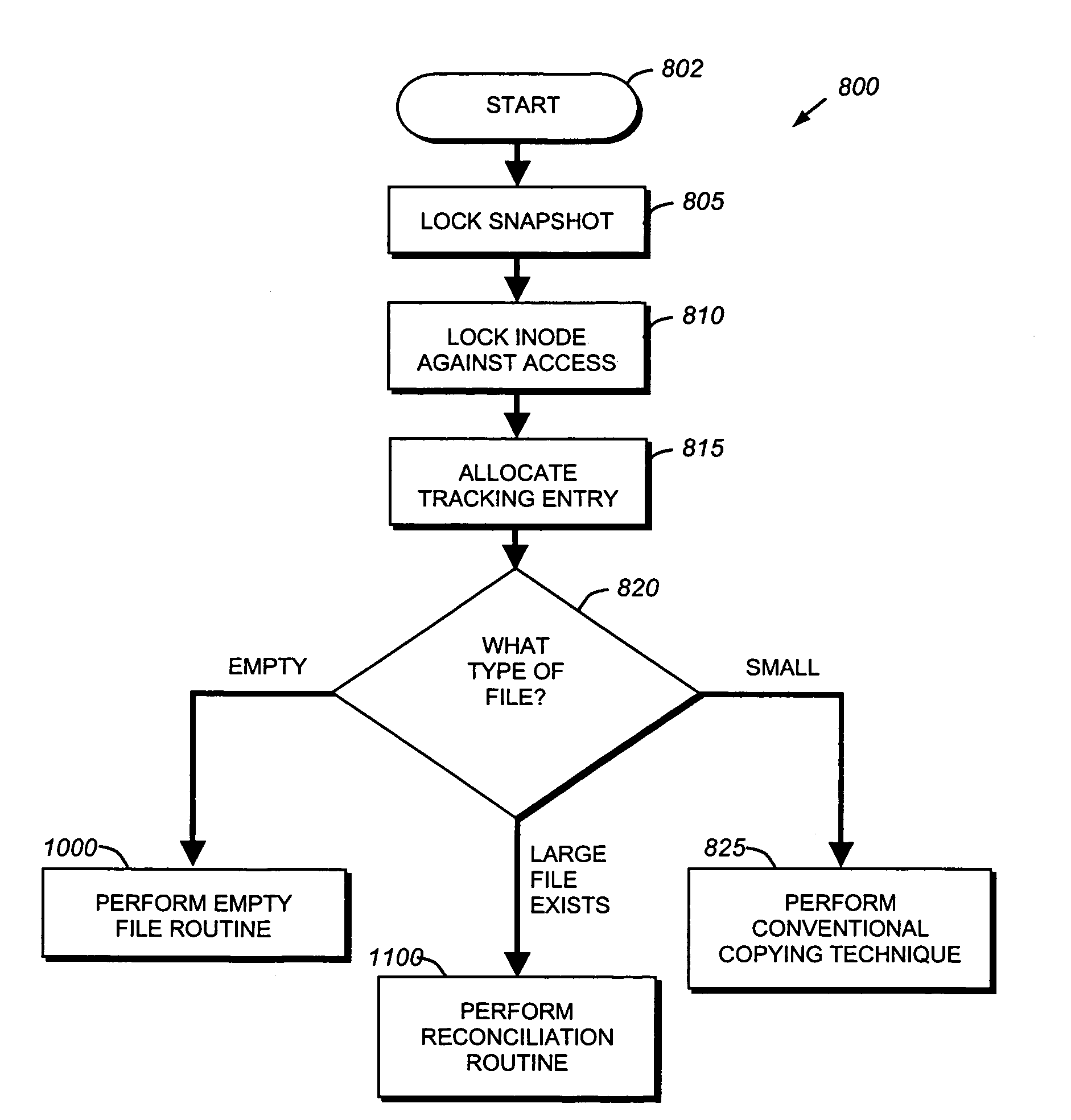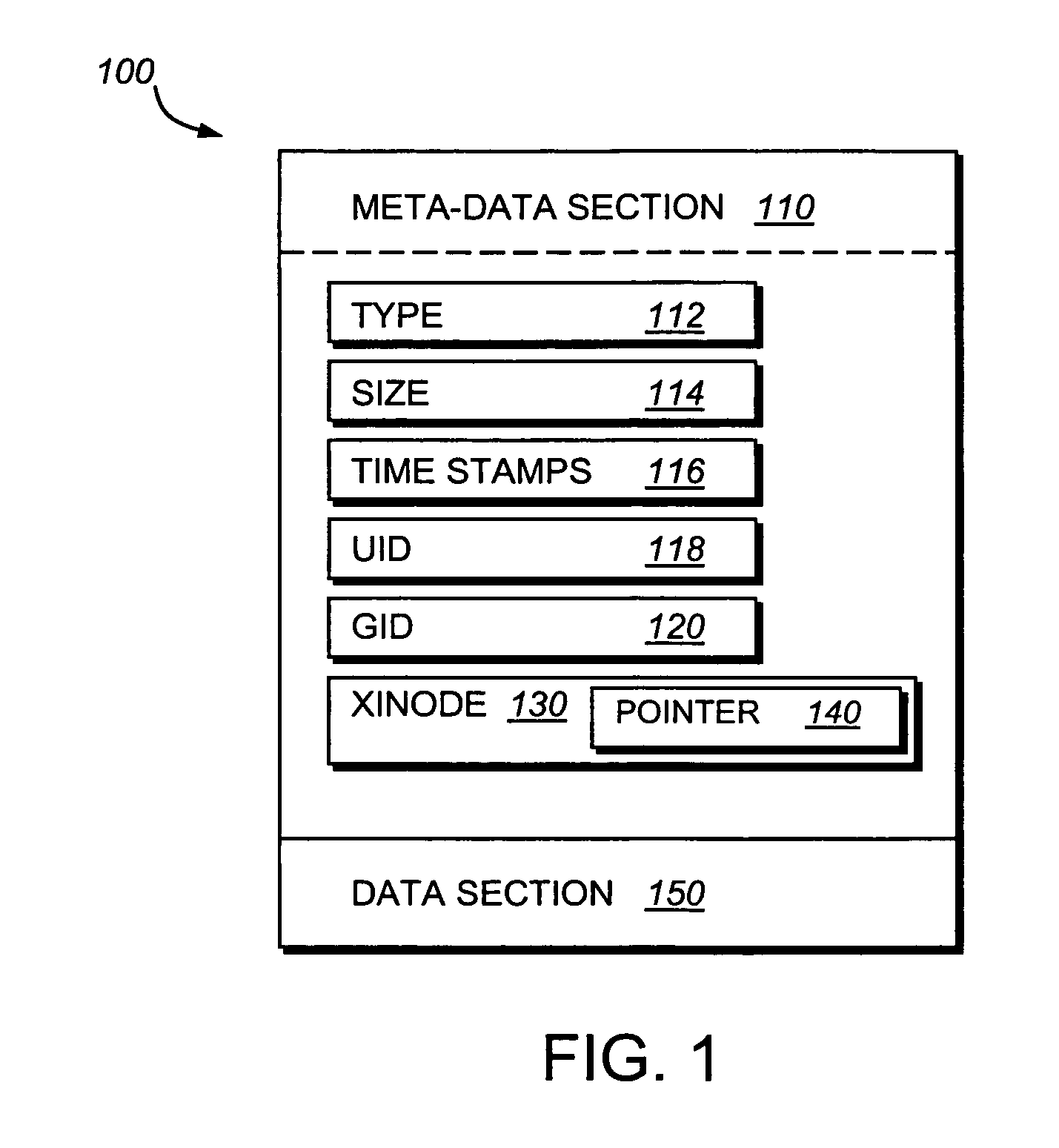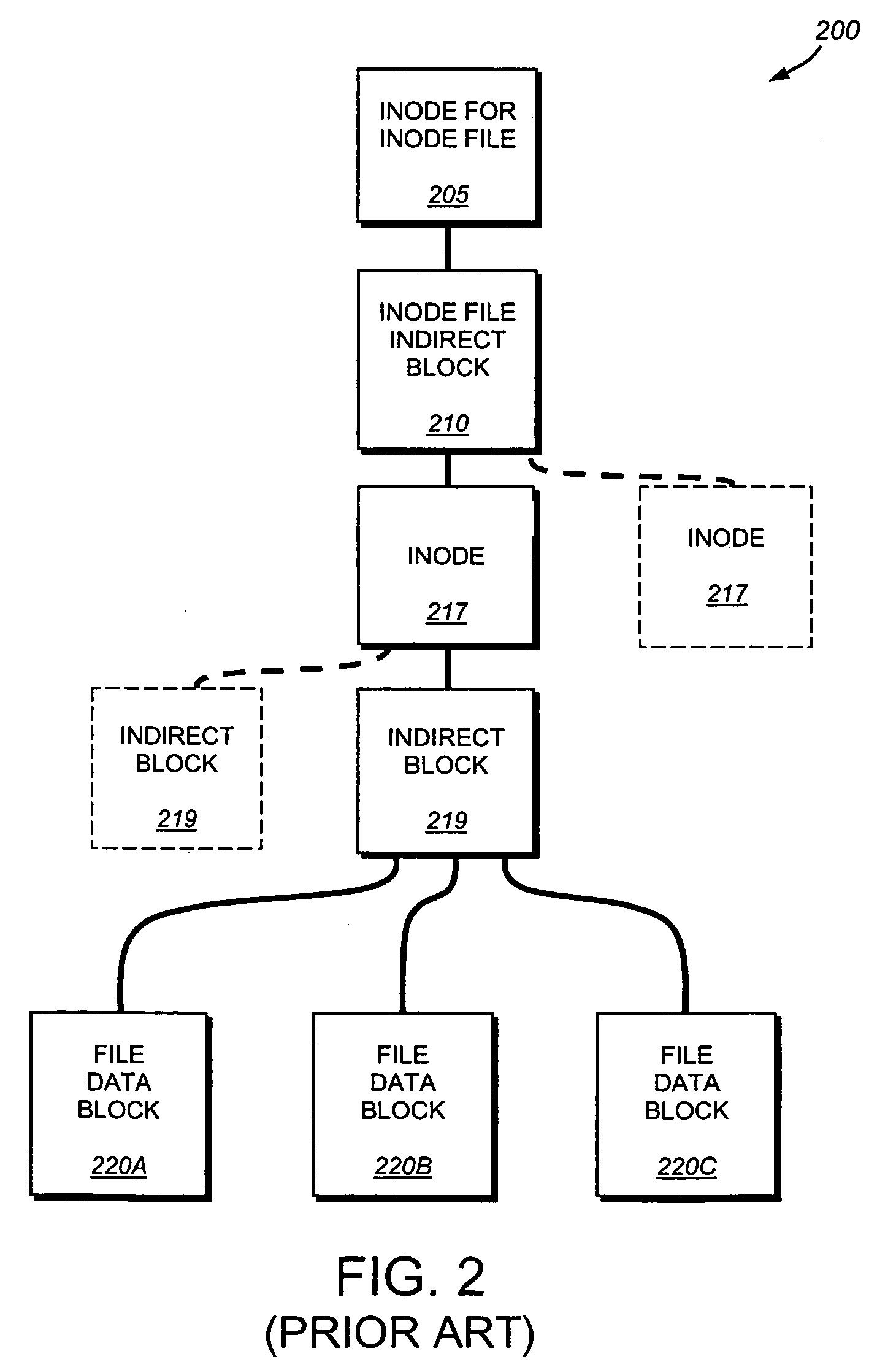System and method for restoring a single data stream file from a snapshot
a data stream file and snapshot technology, applied in the field of data backup and restoral, can solve the problems of requiring a substantial amount of time and processing power, unable to accommodate two full copies of the file volume, and each inode or data block of the snapshot needs to be copied, so as to facilitate the addition of new attributes
- Summary
- Abstract
- Description
- Claims
- Application Information
AI Technical Summary
Benefits of technology
Problems solved by technology
Method used
Image
Examples
Embodiment Construction
A. Filers
[0040]An exemplary file server, or filer, architecture is now described in further detail. FIG. 5 is a more-detailed schematic block diagram of the exemplary file server 500 implemented as a network storage appliance, such as the NetApp® filer available from Network Appliance, that can execute the above-described Data ONTAP™ software and is advantageously used with the present invention. By way of background, a network storage appliance is a special-purpose computer that provides file service relating to the organization of information on storage devices, such as disks. However, it will be understood by those skilled in the art that the inventive concepts described herein may apply to any type of filer whether implemented as a special-purpose or general-purpose computer, including a standalone computer. The filer 500 comprises a processor 502, a memory 504, a network adapter 506 and a storage adapter 508 interconnected by a system bus 505. The filer 500 also includes a stor...
PUM
 Login to View More
Login to View More Abstract
Description
Claims
Application Information
 Login to View More
Login to View More - R&D
- Intellectual Property
- Life Sciences
- Materials
- Tech Scout
- Unparalleled Data Quality
- Higher Quality Content
- 60% Fewer Hallucinations
Browse by: Latest US Patents, China's latest patents, Technical Efficacy Thesaurus, Application Domain, Technology Topic, Popular Technical Reports.
© 2025 PatSnap. All rights reserved.Legal|Privacy policy|Modern Slavery Act Transparency Statement|Sitemap|About US| Contact US: help@patsnap.com



